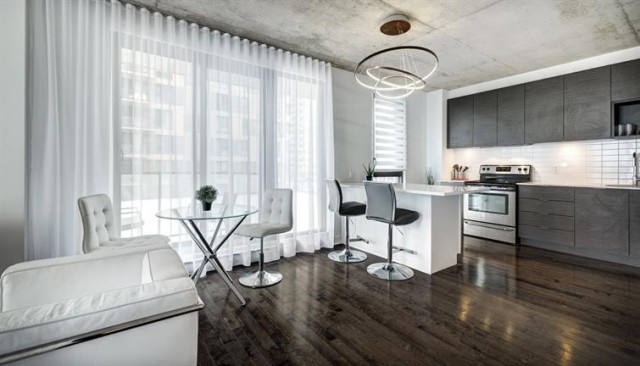You did it. You found the perfect dog and the perfect apartment for you two to share. There’s only one problem: the apartment you’ve decided on doesn’t allow large dog breeds. So what do you do when apartment pet restrictions block you from your happily ever after?
Weight limitations are among the most common pet restrictions apartments have for tenants. They limit the amount of available housing to pet owners, but they also hinder large-breed dogs from finding loving, forever homes. Breed-based discrimination is unfortunately commonplace within the rental community. Fortunately, you can take action to appeal against them. Read on for our guide on what weight-based pet restrictions are and how to repeal them so that you can have the fairytale apartment you’ve wished for.
What are breed restrictions, and why do apartments have them in place?
Breed restrictions are rental policies restricting tenants from renting if they own a specific pet breed. While breed restrictions generally exclude cats, most rental properties place breed restrictions on dogs for their propensity to harm other residents or damage the rental property. As a result of their breeding, select dogs are naturally stronger and territorial. Likewise, other dogs are naturally larger—and with larger size usually comes higher energy levels. Rental properties may fear that stereotypically territorial dogs may harm fellow residents, and larger dogs may damage the property because of their size and energy. Thus, rental properties enforce breed restrictions to protect the integrity and safety of a property and its residents.
How do I appeal apartment restrictions for my pet?
Some dogs genuinely are aggressive or contain destructive energy, but there are exceptions to every rule. If your pet falls outside of the stereotype, it’s crucial to repeal any restrictions and show that your dog is a model citizen. Appealing to a landlord with proof that your dog will not harm their property or other residents may convince them to allow your pet in the unit. This could result in a win-win: to share the apartment you like with the dog you love. Whether you own a pit bull who loves to meet strangers, or a Great Dane with the heart of a chihuahua, there are several steps you can take to ensure that your property manager knows your dog could be an exception to their rules. H3: Create a Pet Resume
Every day, people create resumes to showcase their best qualities, highlight their qualifications, and spotlight the characteristics that make them shine in the competition. Employees effectively use resumes to convince employers of their exceptionality, so why wouldn’t we employ the same method for dogs in the rental community?
A pet resume is your first chance to showcase everything extraordinary about your pet. To make a positive—and lasting—impression on your landlord, make sure to submit a resume with your pet:
- Name, breed, and weight
- Photo
- Vaccination information
- Positive habits and characteristics
- Care routine
- Training and skills
It is also helpful to include a personal letter to your landlord. Include why your dog is an exception to the breed restriction policy in your letter. Highlight all the positive qualities of your pet. Include any obedience training accomplishments and explain why you think their breed should not disqualify your application. Submitting this, along with the pertinent information in your pet’s resume, is the first step in proving that your dog will be a great addition to your landlord’s rental community.
Submit Pet References
The people who know us most are key testaments to our character. For dogs, the friends, family members, and professional caretakers in their lives are no exception. To further prove your dog’s suitability for apartment living, submit pet references to your landlord. These references may come from friends, family, and even from employees of the daycare or training facilities that your dog frequents. Ask friends and family members to detail your pet’s social behavior around familiar and unfamiliar people.
Also, ask pet training or daycare facility employees for a reference. They should provide accounts of your pet’s behavior around other pets and its ability to follow commands. Finally, ask previous landlords to draft a letter that attests to your pet’s good behavior. A landlord’s opinion matters to other property managers, and their testimony is essential. With the positive praise of friends and family and a previous landlord’s recommendation of your pet for the new property, your new property manager may bend their breed restrictions.
Apply for Pet Insurance
Most landlords deny applicants with large dog breeds to protect their property from damage. To show a potential landlord that your dog will not damage their property, enroll in pet liability insurance. This insurance compensates others if your pet injures a person or damages property. While pet liability insurance may not cover aggressive breeds, it does cover large dog breeds. Enrolling in pet liability insurance will help show a landlord that your pet is responsible and that insurance will cover any damage it incurs. Knowing that damages will not negatively impact them may be the key to convincing your landlord to house your dog.
Request a Pet Interview
Sometimes people need to see to believe. Request a pet interview to help dissuade a landlord against their pet restrictions. Host a meet-and-greet interview between your dog and the potential landlord so that they can see for themselves the behavior and obedience of your pet. During the interview, ask to tour the available unit and the surrounding area. As you interact with the landlord, they will have the opportunity to view your dog and gauge how it behaves in the apartment. With a positive personal account of your pet’s personality, they may allow your dog on the property.
Explore Single Family Homes
Many apartment complexes have strict restrictions in place. Still, you may be able to convince landlords of single-family homes to lift their pet regulations. By forming a relationship with an individual landlord—as opposed to a corporation—you may be able to negotiate on behalf of your pet.
Apartments.com Filter by Search
Whether you’re looking to move apartments with your favorite pet or hoping to adopt a dog soon, you can quickly search for pet-friendly apartments on Apartments.com. Go to the site and:
- Search for the city where you want to live
- Select under the "More" tab at the top of the page
- Look for the dog-friendly (and cat-friendly) amenities
- Click Done.
Frequently Asked Questions
What is the average weight limit for dogs in apartments?
Various apartments have different weight limits. However, the average weight limit for dogs in apartments ranges from 25 to 50 pounds.
Can I offer an additional pet deposit to bypass pet restrictions?
When it comes to repealing pet restrictions, communication is critical. You can provide an additional pet deposit to supplement any potential damage. However, the landlord retains the final right to refuse your offer and restrict your pet.






